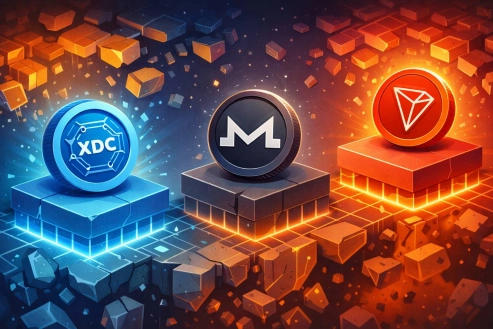Zero-Knowledge Virtual Machines: The Classic, the Modular, the Genuine, and the Misleading
Zero-knowledge proofs have emerged as a protocol involving two parties: the prover and the verifier. The prover can persuade the verifier that certain information is true without actually disclosing the information itself. While anyone can demonstrate they hold information by revealing it, the real challenge is proving possession without revealing any details.
Proof of a statement can only be generated if one possesses specific confidential information related to that statement. Even after confirming the statement's truth, the verifier should not be able to prove it to anyone else.
It's astonishing to realize that the idea of zero-knowledge proofs has been around for nearly four decades. This concept was initially explored in a paper authored by Silvio Micali, Shafi Goldwasser, and Charles Rackoff, published in 1989.
The paper introduced the hierarchy of interactive proof systems and brought forward the idea of knowledge complexity, which evaluates the amount of knowledge transferred from the prover to the verifier.
How zk-virtual machines utilize proofs
A zero-knowledge virtual machine (zkVM) leverages zk-proofs by integrating cryptographic techniques to ensure both security and privacy. Typically, zkVMs are constructed as monolithic systems, meaning the entire zkVM is built into a unified structure. These systems invariably come with optimization trade-offs. Due to their integrated nature, optimizing for particular use cases necessitates modifications across the entire zkVM structure, including essential security enhancements.
Various elements, such as proof generation, state transitions, and execution logic, are closely intertwined and dependent on each other. During execution, the virtual machine handles all computations within a single architecture, covering everything from smart contract execution to proof verification.
Tackling the hurdles of speed and adaptability
Like many cutting-edge technologies, zkVMs are at the forefront of advancement in blockchain and cryptography. However, developers encounter issues regarding speed and adaptability. In the context of a zkVM, speed refers to how quickly the system can generate and verify zero-knowledge proofs. Speed is crucial in a distributed and decentralized setting, as it ensures transactions are processed almost instantaneously while maintaining system usability.
Zero-knowledge proofs are inherently computationally demanding due to their mathematical and cryptographic foundations, making it challenging to accelerate these processes without compromising security and integrity. Nonetheless, there are approaches to enhance speed, such as employing specialized hardware (like ASICs and GPUs) and refining algorithm implementations. Modular zkVMs, like Pico v1.0 recently launched by Brevis, are advancing beyond the traditional zkVM approach. Pico adopts a modular development approach, featuring a customizable structure that boasts the fastest CPU performance globally (70%-155% better than the next best solution). Future updates to Pico will introduce GPU acceleration.
Its modular design combines high-performance specialized circuits with a general-purpose zkVM, enabling adaptable proving fields, workflows, and systems. While traditional zkVMs depend on predefined operations and functions (precompiles), Pico's circuits can accommodate varied application demands. Developers can utilize custom implementations or integrated options to modify custom circuits as precompiles or coprocessors, significantly reducing proof generation time.
Modular machines offer greater adaptability with independent components
Traditional zkVMs are less adaptable when it comes to scaling and customization because they are designed for specific use cases, often focusing on a particular set of applications or smart contract languages. Modular zkVMs deconstruct the zkVM into separate, independent components or modules. This modular method allows for more flexibility by enabling the swapping of different modules according to specific needs or use cases. Developers can select the most suitable cryptographic methods or proof systems for their applications.
In a modular zkVM, various components (such as proof generation and verification) are decoupled and can be updated or replaced independently. This allows developers to concentrate on optimizing or upgrading particular system components. They can enhance modules individually to meet increasing demands without impacting the entire zkVM.
Modular zkVMs are designed with interoperability in mind, facilitating easier integration with different systems and blockchain networks. This is especially beneficial in multi-chain environments.
Users can more readily assemble and connect different virtual machines, enabling complex decentralized applications (dApps) that can leverage multiple machines or zk-proof systems at the same time.
Efficient resource usage is also a crucial factor in the technology's scalability and sustainability. Developers can improve efficiency by optimizing algorithms and employing data compression techniques, which reduce the volume of data to be processed and transmitted.
Genuine zkVMs emphasize privacy
It's crucial to recognize that not all projects claiming to be zkVMs truly qualify as such. Consider two protocols: Aleo and Ola. Aleo is dedicated to developing private, scalable dApps. Its instructions are compiled into bytecode, which is then executed on its zkVM.
Aleo's implementation of zk-SNARK proofs ensures complete privacy. Although specific performance metrics were not widely available as of last year, the platform achieves scalability through efficient proof systems.
Aleo connects with other zkVM-based protocols and is designed for privacy-focused dApps. It qualifies as a zkVM, offering a comprehensive solution for private dApps.
Ola is created to generate validity proofs for computations and securely execute them off-chain. The protocol is designed to deliver high transaction throughput. It is compatible with several L1 blockchains and supports a hybrid zk-rollup design. However, true zkVMs prioritize privacy differently. Ola focuses on verifying the correctness of computations and transactions, rather than ensuring data privacy. As a result, Ola is not a zkVM. Instead, it is a zk-rollup platform aimed at reducing transaction fees and enhancing throughput on L1 blockchains.
Disclaimer: This article is provided for informational purposes only. It is not offered or intended to be used as legal, tax, investment, financial, or other advice.
Investment Disclaimer

















